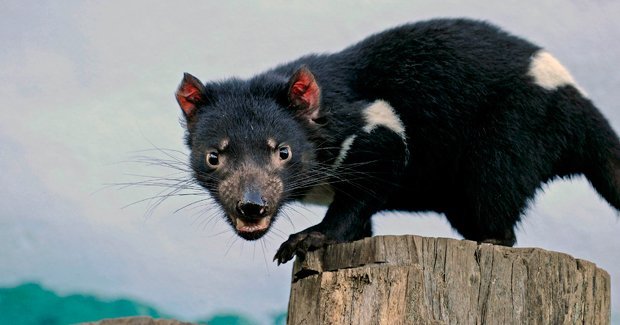Tassie devils get sanctuary in NSW

THE TASMANIAN DEVIL, UNDER threat from infectious facial tumours, could claw its way back from the brink of extinction at a new refuge to be created in NSW’s Hunter Valley.
The Australian Reptile Park (ARP) at Somersby, in the Hunter Valley, has teamed up with the Foundation for Australia’s Most Endangered species (FAME) to develop the “Devil’s Ark” refuge in a bid to boost the marsupial carnivore’s dwindling population.
The proposed ark will be established at a separate facility in about 350 hectares of private bushland at Barrington Tops, in the upper Hunter Valley. A group of 48 devils is due to arrive at the facility in November and they hope for a captive bred population of 900 devils by 2020.
Flexible program
“The short term plan may not even need to be 900,” Tim Faulkner, senior curator at the ARP told Australian Geographic. “It depends on what happens with the wild population… the [program] will mould to wild population and the requirements of the captive population.”
The black and white furred marsupials face extinction because of a rare transmissible cancer that causes tumours on their faces. “The tumours cause almost 100 per cent mortality within six months of first diagnosis,” says Hamish McCallum a key expert on the devil, based at Griffith University in Queensland.
The ark project has been in the pipeline since 2006, but it’s yet to be approved by the Upper Hunter Valley Shire Council, which will consider a development application later this month. If it gets the go-ahead, it will be one of the most ambitious endangered species breeding programs ever undertaken in Australia, says John Weigel owner of the ARP.
“I have stuck with the vision because we genuinely believe that if we don’t all rally together to do the work, the Tasmanian devil may be lost forever,” he says. “Despite the continuing efforts of researchers, veterinarians and government agencies to find a solution, there remains little cause for optimism.”
80% decline
Hamish says that the devil has suffered a more than 80% decline in its population since the mid-1990s and and only around 10,000 – 15,000 remain in the wild.
Because of the drastic nature of the decline it’s important that we have some insurance populations, says Peter McGlone of the Tasmania Conservation Trust, in Hobart. Breeding populations in captive refuges and on isolated islands are an important addition to those in zoos and wildlife parks, he says, but progress at getting approval for island refuges has been frustratingly slow.
Hamish applauds the plan to build a large captive population at Barrington Tops, but he thinks the estimated numbers are optimistic. “The realistic numbers are very hard to say, but if they manage to get the numbers up to the low hundreds they’d be very successful.”
Hamish adds that if a solution is not found, the species could become extinct in the wild within 25 to 30 years. A cure is unlikely, “but there are other solutions such as finding resistant animals or a vaccine,” he says.
LINKS
More about the Devil Ark project

